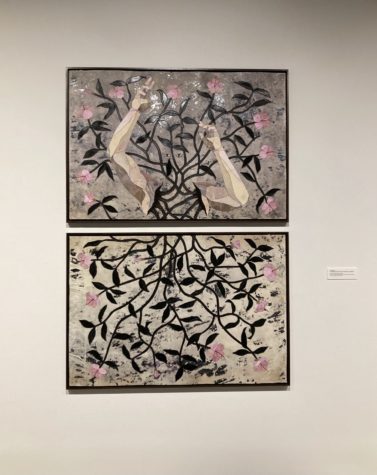“Prospect 5” showcases individual, collective consciousness

On Oct. 23, the Contemporary Arts Center of New Orleans unveiled their latest exhibition, “Prospect 5: Yesterday we said tomorrow.” P.5 is the fifth edition of Prospect New Orleans, a citywide art exhibition that will remain open until Jan. 23.
The title encapsulates the “unspoken present, the place where past and future come together, and where other courses of action become impossible.” It also alludes to the deferral of meaningful change, a theme which permeated my thoughts as I walked around the exhibit.
The exhibition description emphasizes that the artists use their work to “manifest suppressed histories” and reiterates art’s interconnectedness to daily life in New Orleans.
The featured pieces represent modes of memorializing, mourning, knowing, resisting and sustaining oneself and community. The artists in this exhibition have set out to plot a different future in their respective compositions.
I wish this description would have touched on P.5 itself, as it is very useful to the viewer to understand the background of this exhibition series. On the CACNO website, P.5 is described to be an intergenerational group of artists examining the ways in which the past forms the present, a perpetual layering of histories. The artistic practices work in tandem with history as a vision of individual and collective consciousness.
Divided into two sections, the first half of the series spotlights artists who utilize public and communal knowledge in their works. Mark Bradford’s installation, “Crates of Mallus,” introduces thematic concepts of the exhibition. As I stood before this wall lined with globes, the art evoked an environmental consciousness which spoke to human connection.
When describing Bradford’s statement piece, the curator asks, “Can we reimagine the terms under which knowledge is produced, valued and shared?” This question is answered by the artists themselves, as the entire exhibit is an exchange of personal experience, knowledge and culture through the selected works.
Continuing through the exhibit, I was drawn to artist Hương Ngô, who grew up as a refugee in the American South. Her conceptual practice was developed through lines of inquiry on colonialism and migration. Her translations of historical texts forces the passive viewer to interact with sentiments far from their reality and shines a light on marginalized populations.
One of her works, titled “Untranslatable,” invites the viewer to take a copy of her art, which is a stack of newspapers on the floor. Upon opening the newspaper, there is an article which discusses translation as a tool of colonialism. If you plan on seeing this exhibit, I urge you to grab a copy.
Walking up the spiral ramp, I reached the second half of the exhibit featuring artists addressing our relationship to landscape and place. Some aimed to represent our world in relation to the cosmos, while others highlight the rituals, gestures and social behaviors we establish to develop an understanding of our world.
Immediately, I was entranced by the work of Kevin Beasley, whose charcoal drawings appear as if they were black and white photographs.
My eyes soon drifted to the work of Felipe Bazea, a painter and printmaker whose work merges the human being with nature, an association we commonly dissociate from in our daily lives. As I awed at his skilled use of color and texture, I felt that his work represented a common struggle to utilize our roots in the past to create a better future.
Although I enjoyed P.5, I took issue with the exhibit’s lack of descriptions for individual artists within the pamphlet or the space itself. While I don’t mind looking online for more information, providing such resources would elevate the visual and learning experience.
P.5 excels in its ability to uplift marginalized voices and those of native backgrounds.Curators Naima J Kieth and Diana Nawi displayed her talents with a seamless conceptual development. Global relatability and individual experience amongst the artists engage the viewer in contemplative introspection, all while challenging them to learn about marginalized experiences.
Your donation will support the student journalists of Tulane University. Your contribution will allow us to purchase equipment and cover our annual website hosting costs.




Jeanne Nathan • Nov 2, 2021 at 12:54 am
Please ask the writer to contact the CANO E.D. Jeanne. Nathan, 917.232.4522, jnathan.ci@gmail.com ⁰